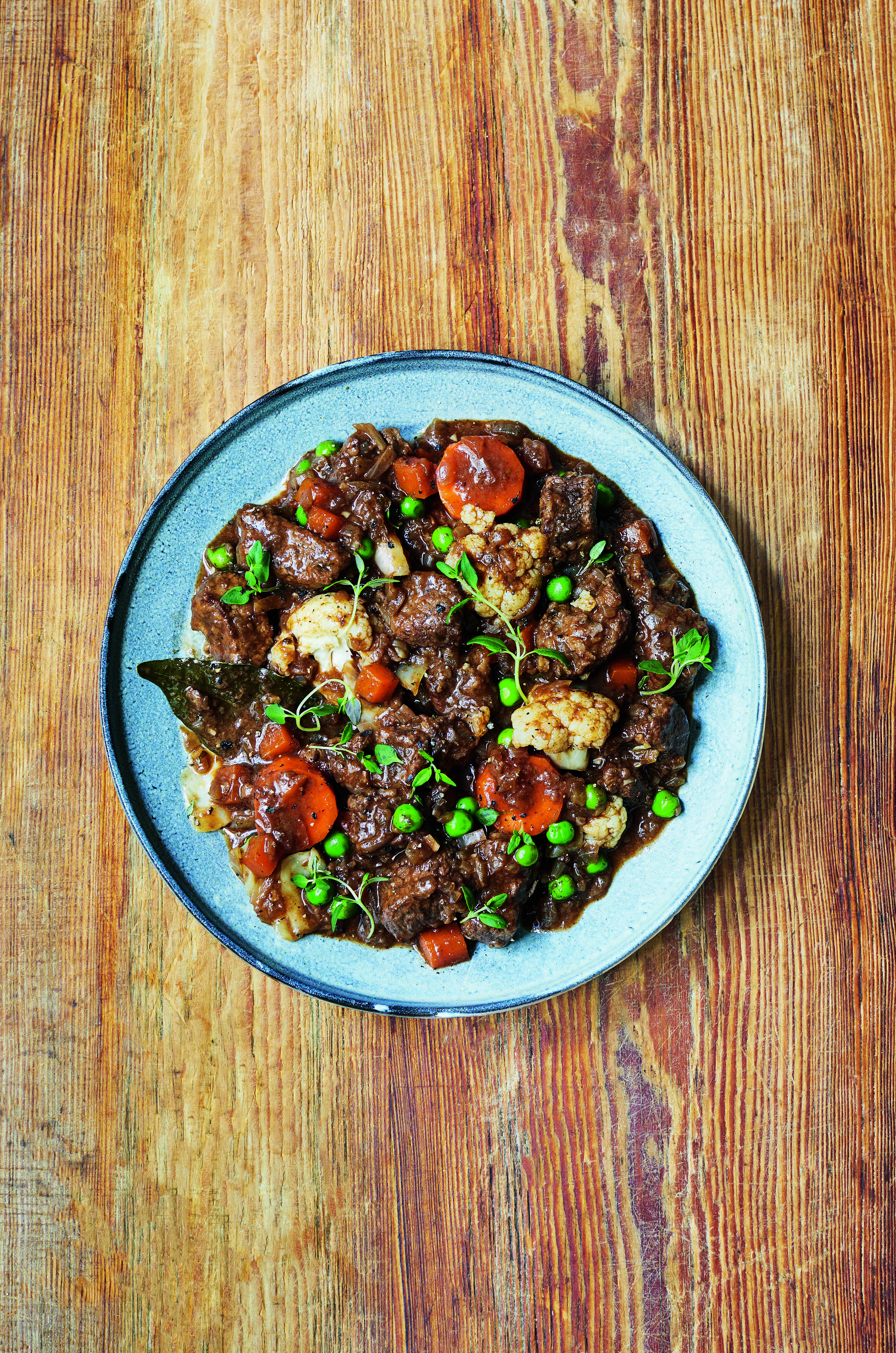
Hungry for Red meat? Try these prime cuts of Wellness
A good diet can still include a little beef, says Dr Gary Deng, author of The Wellness Principles
In his new book, The Wellness Principles, Dr Gary Deng, offers a colour guide to the ideal selection of foods on a plate. Dr Deng is the Medical Director of Integrative Medicine at Memorial Sloan Kettering Cancer Center, and Clinical Professor of Medicine at Weill Cornell Medical College, and so you might conclude a colour chart would be a bit too simplistic for such an accomplished physician. However, in his new cookbook, Dr Deng does a great job of breaking down complicated nutritional advice into easy, digestible chunks, hence the colours.
“The vegetable part of your plate should be a rainbow (green, red, yellow, purple, etc.),” he writes, “the protein part light in colour (nuts, beans, egg white, fish, shellfish); the carbohydrate part dark in colour (whole wheat, brown rice, other whole grains).”
Steak lovers draw much comfort from Deng’s polychromatic plate. In this picture, juicy red meat is conspicuous by its absence. Fortunately, Dr Deng doesn’t entirely outlaw beef and lamb; instead he advises readers to limit their intake. “If you love meat, an occasional meat dish is fine,” he advises, “and won’t cause harm in the bigger scheme of things.”
In the Wellness Principles there are meat-free burgers, meatballs made from turkey rather than beef, as well as lots of nutrient-rich, red-meat free stews and salads. However, he does also feature the occasional beef dish, such as this beef stew with carrots, cauliflower, and cabbage.
In the introduction to the recipe, Dr Deng stresses that too much red meat is still a bad thing. “However, an occasional red meat dish (once or twice a month) is fine in a mostly plant-based diet,” he goes on to say. “I prefer a low-temperature cooking method, such as stewing or braising, instead of grilling or frying. Here, I adapt a classic beef stew recipe to make it healthier. Instead of potato, which has a high glycemic index and is starchy, I use cauliflower and cabbage, healthy cruciferous vegetables, plus green peas, with the classic carrots. I also use a much higher vegetable to meat ratio, to bring the proportions to the healthy range.”

Dr Gary Deng
To make four servings of the stew, you’ll need a ¼ cup (35 g) of all-purpose flour or two tablespoons cornstarch (cornflour); a teaspoon of sugar; a ¼ teaspoon of freshly ground black pepper; a ½ teaspoon of sea salt, plus extra for seasoning; 1½ lb (680 g) of boneless beef chuck (roast), cut into 1½-inch (4 cm) cubes; two tablespoons of olive oil; a stalk of celery; two large carrots; half a medium onion, chopped; two cloves garlic, chopped; two cups (16 fl oz/475 ml) of stock (beef, chicken, or vegetable) or water; a cup (8 fl oz/250 ml) of dry red wine; two tablespoons of balsamic vinegar; a tablespoon of tomato paste; two bay leaves; a teaspoon of chopped thyme; a teaspoon of Worcestershire sauce; half a small head cauliflower, cut into 1–2-inch (2.5–5 cm) florets; half a small head cabbage, cut into 1-inch (2.5 cm) chunks; cornstarch (cornflour), for thickening (optional); and a cup (120 g) of green peas.
In a shallow bowl, combine the flour, sugar, pepper, and salt. Add the beef cubes and toss to coat. Reserve the seasoned flour left over in the bowl. In a large pot or Dutch oven (casserole), heat the olive oil over medium heat. When hot, add the beef cubes in two batches, about two minutes per batch. Remove the beef cubes to a plate and set aside. To the same pot, add the celery, long carrot pieces, onion, and garlic. Cook until the onion is translucent. Meanwhile, in a large measuring cup (jug), combine the stock, wine, vinegar, tomato paste (purée), bay leaves, thyme, Worcestershire sauce, and reserved flour and whisk until smooth. Add to the pot and bring to a simmer, stirring to loosen the caramelised bits at the bottom of the pot.
Return the beef to the pot and bring to a simmer. Cover and cook over very low heat until tender, 1½–2 hours, stirring occasionally to prevent the beef from sticking to the bottom of the pan and adding a bit more stock or water if the pot becomes too dry. Add the carrot chunks, cauliflower, and cabbage. Bring to a boil over medium heat, then reduce the heat to low, cover, and simmer until the vegetables are soft, 30–45 minutes. (If the stew is too thin, whisk a tablespoon of cornstarch/ cornflour into ¼ cup/2 fl oz/60 ml water or stock and stir into the stew.) Stir the peas into the finished stew, remove from the heat, and let the pot sit for 10 minutes to cook the peas.

The Wellness Principles
For a fuller recipe as well as much more besides order a copy of The Wellness Principles here.